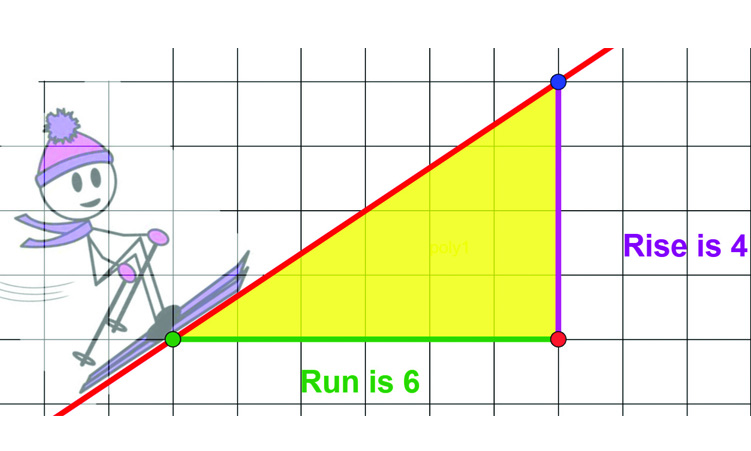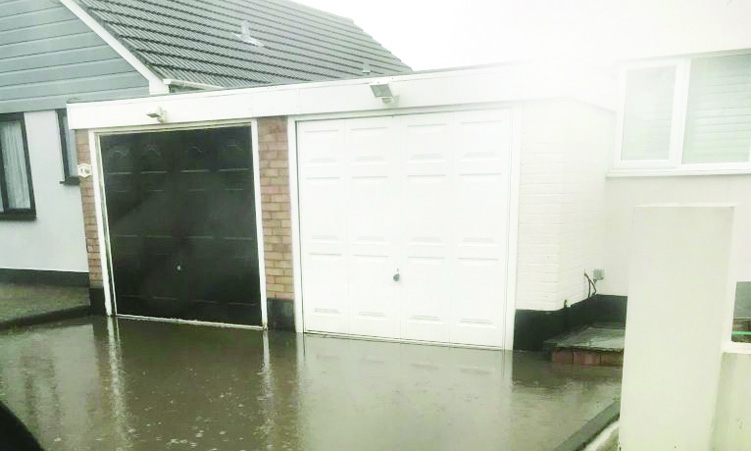Task: Discuss one way in which the mathematical gradient impacts your daily life.
- What does the mathematical gradient mean?
Looking at the picture on the right, you may have noticed that the water from the rain is collecting in front of the garages. Flooding in driveways, garages, and homes are generally caused by a bad water drainage systems.
One important element of a water drainage system is its gradient.
The gradient represents how steep a ramp is. It is represented by the ratio of rise to run, or its height and length, respectively. If a surface is horizontal, like the surface of most desks, then the gradient of that surface is zero.
A garage could have a driveway sloping down towards it, or a driveway sloping up. In each case, the gradient plays a role in the drainage system.
Shower floors also need a gradient to ensure the water runs to the drain efficiently, and does not cause pooling. Even the floor of a house’s entrance, or veranda, needs a gradient to avoid rainwater entering the house.
The gradient alone does not solve the flooding problem, but it remains an important player in a water drainage system.
- How to evaluate a gradient:

The rise-over-run formula is one way to calculate the gradient of a straight line joining any two points. The vertical difference between the y-coordinates of the two points is called the rise. The horizontal difference between the x-coordinates of the same two points is called the run.
The gradient can be calculated by dividing the rise by run. Gradients are mostly expressed in ratios, angles and percentages.
We can use this formula for our calculation:
Gradient = Rise/Run
Gradient = 4/6 × 100% = 66,7%
If you want to know if your floors are horizontal (level), or whether your walls are vertical (plumb) you could use a spirit level (bubble level, or simply a level).
Question: Calculate the gradient of your school’s staircase and compare your value to the permitted gradient of staircases built indoors or outdoors in Namibia.
- How to use gradients for the safety of our kids:

The slide is one of the most popular items on a playground. They are enjoyed by users of all ages. Slides allow children to play, and they promote balance, coordination and physical activity.
They provide climbing experience and help to strengthen the torso, arms and shoulders.
A slide can, however, be dangerous if not properly put together and used, as we can see in the picture on the right in which a child is thrown from water slide.
Slides should have an acceleration zone where the gradient is pretty high but safe, a deceleration zone with a smaller gradient than the gradient of the acceleration zone, and a buffer zone where the gradient tends to zero.
We should not forget a very important element behind the slide – the ladder.
Even the ladder has a gradient. If the gradient of the ladder is not appropriate, accidents could occur.
Question: Discuss a suitable way to build a slide, and provide the values of your gradients in degrees to ensure users’ safety.
Compare your values with internationally specified values.
Stay informed with The Namibian – your source for credible journalism. Get in-depth reporting and opinions for
only N$85 a month. Invest in journalism, invest in democracy –
Subscribe Now!






